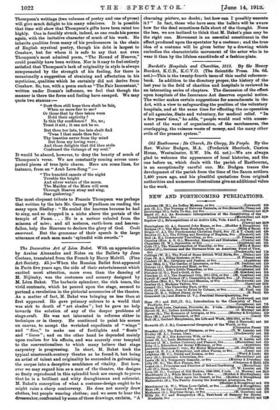The Decorative Art of Leon Bakst. With an appreciation by
Arsene Alexandre and Notes on the Ballets by Jean Cocteau, translated from the French by Harry Melvill. (Fine Art Society. t5.)—When the Russian Ballet first appeared in Paris five years ago, the side of their entertainment which excited most attention, more even than the dancing of M. Nijinsky, was the costumes and scenery designed by M. Leon Bakst. The barbaric splendour, the rich tones, the vivid contrasts, which he poured upon the stage, seemed to portend a revolution in the pictorial accessories of the theatre. As a matter of fact, M. Bakst was bringing us less than at first appeared. He gave primary colours to a world that was sick to death of " art shades" ; but he gave no help towards the solution of any of the deeper problems of stage-craft. He was not interested in reforms either in technique or in theory. He continued to paint his scenes on canvas, to accept the wretched expedients of " wings " and " flies," to make use of footlights and " floats" and " limes" ; and on the other hand he depended mainly upon realism for his effects, and was scarcely ever tempted to the conventionalism to which many believe that stage carpentry is progressing. In short, M. Bakst took the typical nineteenth-century theatre as he found it, but being an artist of talent and originality he succeeded in galvanizing the corpse into a deceptive semblance of vitality. But how- ever we may regard him as a man of the theatre, the designs so finely reproduced in this splendid hook are enough to prove that he is a brilliant and witty draughtsman and colourist. M. Bakst's conception of what a costume-design ought to be might raise a sharp controversy. He does not merely draw -clothes, but people wearing clothes; and we seem to bear the dressmaker, confronted by some of these drawings, exclaim, "A charming picture, no doubt; but bow can I possibly execute it ? " In fact, those who have seen the ballets will be aware how far the deed sometimes falls short of the thought. None the less, we are inclined to think that M. Bakst's plan may be the right one. Movement is an essential constituent in the effect produced upon the spectator by a costume ; and the true idea of a costume will be given better by a drawing which embodies the characteristic movement of the actor who is to wear it than by the lifeless exactitude of a fashion-plate.














































 Previous page
Previous page